Installing a fence is crucial for any residence as it guarantees privacy and marks the limits of your possession.
Correct yard measurements are critical to proper fencing. Proper yard measurement takes into account: the property lines, slopes, obstructions, and the local authority zoning codes. Incorrect measurements will cost you dearly. Thus, employing professional assistance will enable you to get it right the first time.
While the yard measuring process may seem like an easy task, there are several issues that homeowners must look into to have the correct yard measurements for fencing.
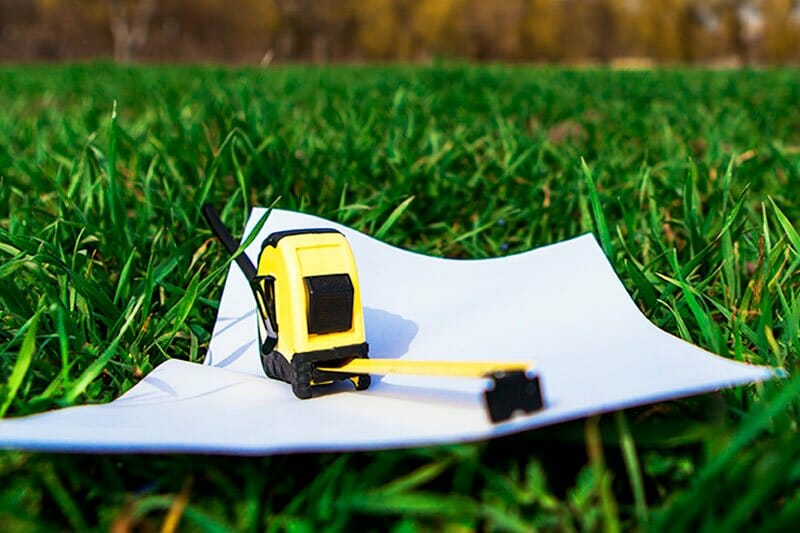
Determine Your Property Lines
Do you know your property lines? The first tip is determining the measurements of your property accurately一identify where your property begins and where it ends.
Your property plan can help determine your property lines. It defines the property lines, showing you exactly where your property begins and ends. It’s also vital in avoiding property disputes, and you should consider reviewing it with your neighbor to avoid costly conflicts once you’ve already installed the fence.
A mistake at this stage may be costly could result in lawsuits or the fence being brought down. In case any issues arise at this point with the property lines, you can hire a surveyor to help clarify the boundary line issues.
Talk To Your Neighbors
It is imperative to discuss your fence construction plans with the neighbors whose property lies along the fence lines. It helps make them aware of your plans to ensure the fence does not lie on their property.
Additionally, letting them is a courtesy call that ensures they’re not bothered by the construction process or the finished product. Your neighbor’s input on the size and look of the fence could also be crucial if you’re sharing the fence. Ignoring this step could offend the neighbors and even attract legal disputes.
We recommend building your fence several inches away from the marked lines to maintain peace and guarantee compliance with the property lines.
Look Into Local Zoning Codes and Restrictions
Local authorities operating in various cities have restrictions on fencing. Ensure you review your local area codes and regulations as they may limit the style of fencing, height, or fence placement.
The restrictions on fencing are primarily applicable to the front yard fencing. However, they may also restrict the kind of backyard fencing. Adhering to the codes for building the fences will prevent demolishing by the various authorities and save you costs you’d incur when rebuilding.
Consider Obstructions
Obstructions such as trees need to be considered when measuring your yard for fencing. That’s because trees, slopes, and other immovable obstructions play a crucial role in where a fence may be erected and where it cannot be erected.
Slopes also impact the measurements and installation. To determine the percentage of a slope:
- Run a string line from the start of the fence line to the end of the fence line.
- Measure the horizontal length and the height.
- Divide the height by the length and multiply the figure by 100 to give you the slope percentage.
When you know the slope percentage, you can decide on either stepping or racking the fence. Stepping the fence refers to stepping up the panels and creating gaps below it while racking refers to hugging the ground on all posts and pickets of similar length.
Don’t forget about underground utilities, like electric, cable, and gas lines, less apparent obstructions. Identify these and have these marked before proceeding to plan around them.
Step-By-Step Process For Measuring the Yard
There are various steps involved in yard measurement.
Start by marking the corner posts using stakes, paint, or rocks. It’s usually where the yard panels meet at a right angle.
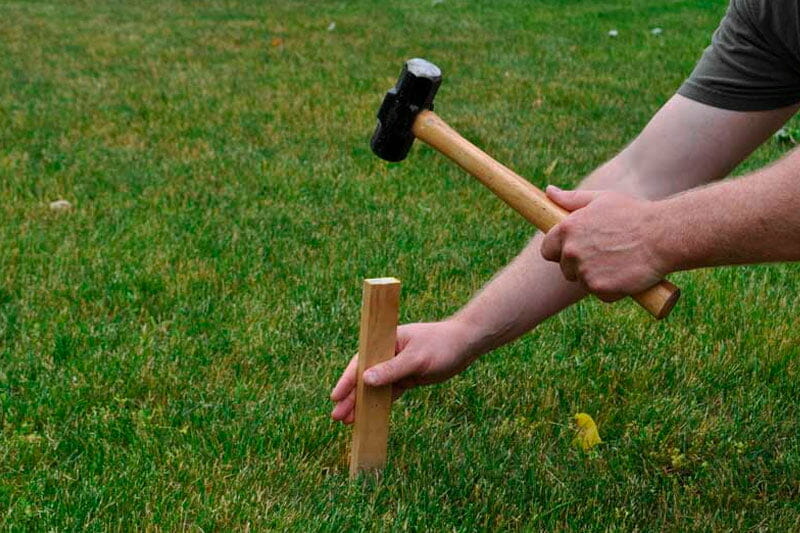
Measure the perimeter of the area you wish to enclose using the stakes. Ensure you have the 100 feet measuring tape throughout the measuring exercise. Stretch out the measuring tape to ensure that your measurements are not affected by the slack.
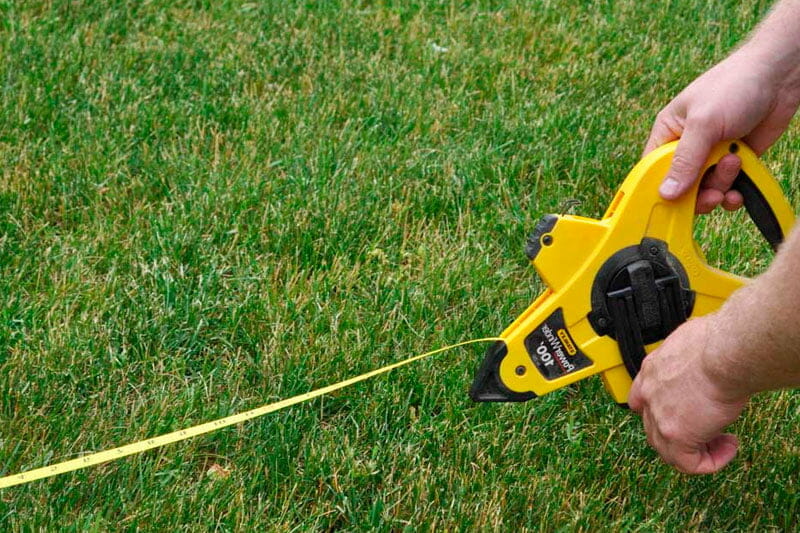
Confirm the length of the fence panels you should be using. They should be either eight or six feet in accordance with the fencing standards.

Determine your end posts; this is anywhere the fence ends, whether at a gate, the house, or a tree.
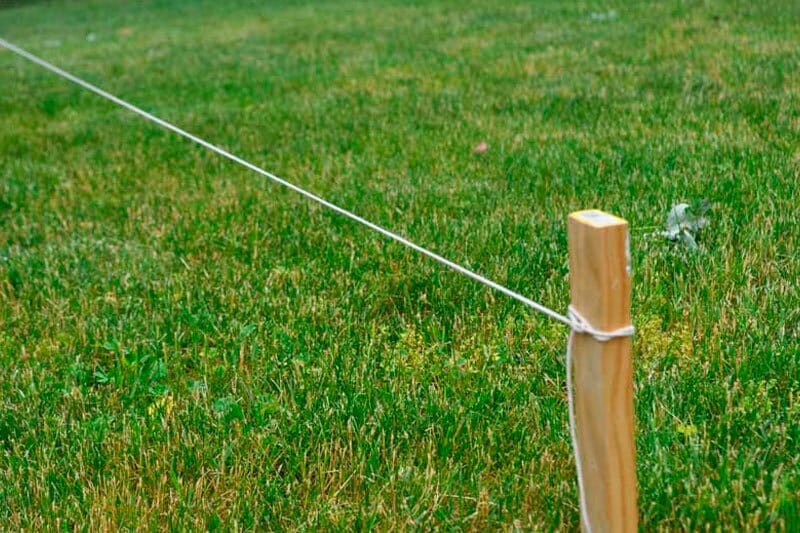
Divide the perimeter of the area you will be fencing by the length of the panels to determine the number of poles you will need for fencing. Place your stakes where the post lines and post ends will be located. The appropriate placing entails starting at a corner, measuring the length of the panel, and placing a stake.

Depending on the area you are working on, you may have partial sections of the entire plot. The partial sections should not be more than two and a half meters long. The location of the partial sections should be near the gate or the corners of the yard.
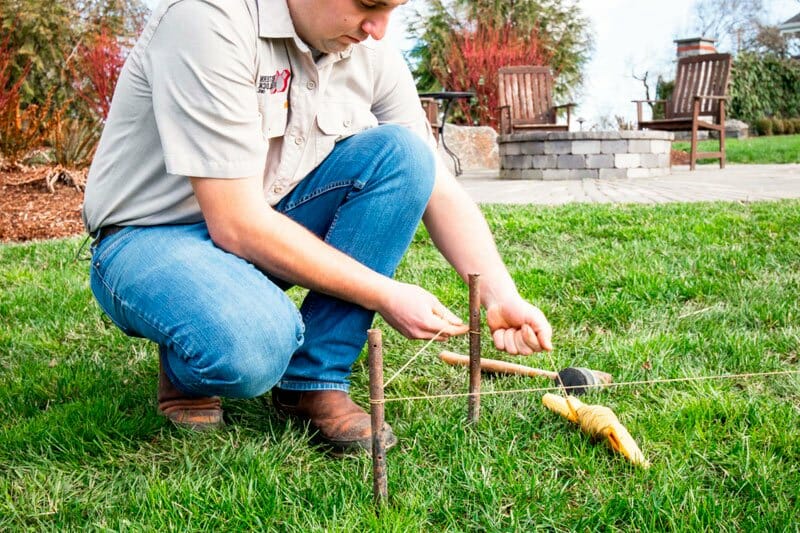
Measure the Height of the Fence
It is crucial for you to know the height of the fence that you will be installing in your yard. That’s because most homeowner associations regulate the height of the fence homeowners can install to enhance uniformity and prevent incidences of spite fences. Local authorities may also have a say in how high a fence can be to avoid the creation of blind spots near intersections.
Some local authorities and neighborhood associations will also regulate the style of fencing, especially in the front yards.
The correct way of measuring how high your fence shall be is through measuring the height from the base of each stake to the highest point of each building.
The height is not limited to the pickets in the building but all the accessories that the fence will have, such as lattice or even horizontal boards.
The exception of the measurement of the height of the fence is the point where there exists a perimeter wall in the neighboring property. Here, the height shall be measured from the existing fence height to the highest point of the building to be fenced.
Unless the legislation is clear on the height of fencing, the height of any fence shall also incorporate the height of all the accessories of the fence.
Double Check the Measurements
Precision is key in measurements. Therefore, you should double-check all the measurements to ensure they are accurate.
You can also measure the yard a second time to ensure that the measurements for all areas are correct.
In case of any discrepancies in measurements, you can go on and measure a third time. If another person can help out, you can involve them in settling the measurements with various discrepancies.
Never assume that the first-time measurements are correct. Even professional fencing personnel do err in their work, albeit seldomly.
Get an Estimate
Measuring your yard accurately for fencing is not an easy job. It is a time-consuming exercise that you may not be fully available to accomplish on your tight schedule. It is a good idea to consider hiring professionals to carry out the task of measuring your yard.
Professionals have got the time, skills, and the tools needed to accomplish a given task accurately. HomeGardenGuides can help you get a quick, easy, and affordable piece quote from the best local fence installers near you. How?
- Scroll to the top of the page and answer a few questions about your fencing job.
- Get matched with top-rated pros, who’ll provide you with price estimates and friendly advice in seconds.
- Compare the quotes and select the best pro for the job.

Determine The Type and Amount of Materials Needed
Once you are confident that you have all the measurements of the length and the height of the fence for your yard, you should now begin shopping around for the building materials.
Your supplier will help you shop for the materials required and get you the correct dimensions for the building materials.
If you are working with a professional company, you should consider their input in the entire exercise of measuring your yard and acquisition of materials for fencing. Professional input helps avoid any shortcomings in the building process.
Obtain A Building Permit
After all, is said and done, you must obtain a fence building permit from local authorities before installing the fence. The permit shall entail the kind of fence and the style of fencing. It’s essential as it helps you to avoid legal suits involving the type and height of fencing you choose for your property.







